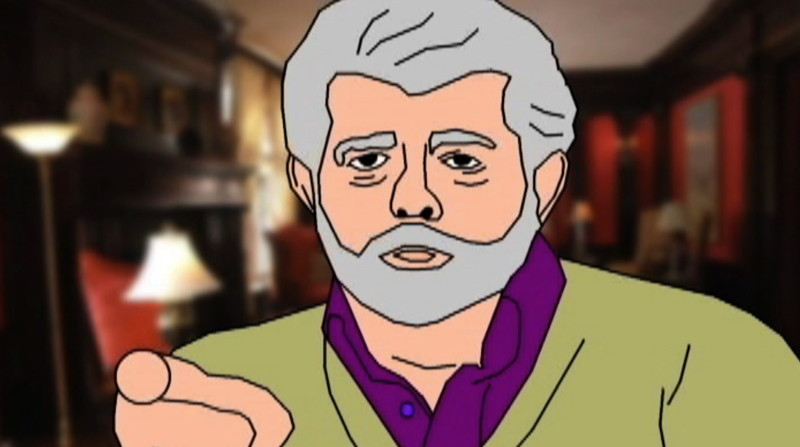Thanks for the memories?
Documentary explores the reaction of fans and critics to George Lucas’s Star Wars films
Without running the risk of slipping into hyperbole, it is safe to say that Star Wars has spawned the sort of fanatical devotion generally reserved for cult leaders and teen pop stars. If you have any doubt of this fact, be sure to take in The People vs. George Lucas.
The film chronicles the rise and fall of Lucas as told by his fiercest fans and critics (oftentimes the same people) and complemented by numerous strange and hilarious fan films.
Broken into four “episodes,” the film begins during the time when Lucas could do no wrong in the eyes of his followers. He made three successful Star Wars movies and created a merchandizing monster which provided everything from action figures to pyjamas.
It wasn’t until the mid-90s that Lucas’s credibility started to go south when he released his special edition versions of his treasured trilogy.
The film spends a lot of time documenting fans’ disillusionment over seeing Jabba the Hutt digitally inserted into Episode IV: A New Hope and the horror over the fact that Greedo shoots first in the cantina on Tatooine.
However, all of this re-editing misery becomes merely an overture to the great tragedy that would be Episode I: The Phantom Menace. Judging by the reactions, one might think that Lucas came into these people’s homes and literally raped their childhoods.
Of course, that is exactly how many of the interviewees describe the experience of Jar Jar Binks, so it’s an easy enough mistake to make. I won’t even get into the controversy that erupts over Midi-chlorians.
If everything you’ve read so far sounds horribly pedantic, that’s because it is. This is a movie for the geeks, the obsessed fans that put on their Darth Vader helmets and pontificate late into the night on message boards about why Chewie didn’t get a medal along with Luke and Han at the end of A New Hope.
That’s not to say that there aren’t some interesting ideas being examined.
For instance: who really owns a piece of art once it has been released? What role should fans have in crafting the legacy of their favourite films? And, is hate the ultimate endpoint for any fervently dedicated fan?
In the end, the film manages to strike a balance between fanaticism and rationality by keeping the whole from being overrun by the craziness of its parts.
Like any conversation with an obsessed fan, The People vs. George Lucas is entertaining, confounding, amusing and always lively.
Published in Volume 65, Number 26 of The Uniter (June 2, 2011)







